This is the list of 30 famous Outlaws of the Wild West. While the list is not comprehensive, and perhaps I will add more when I learn more, it should cover most of the violent criminals and bank robbers that ran wild for a bit during the late 19th century.
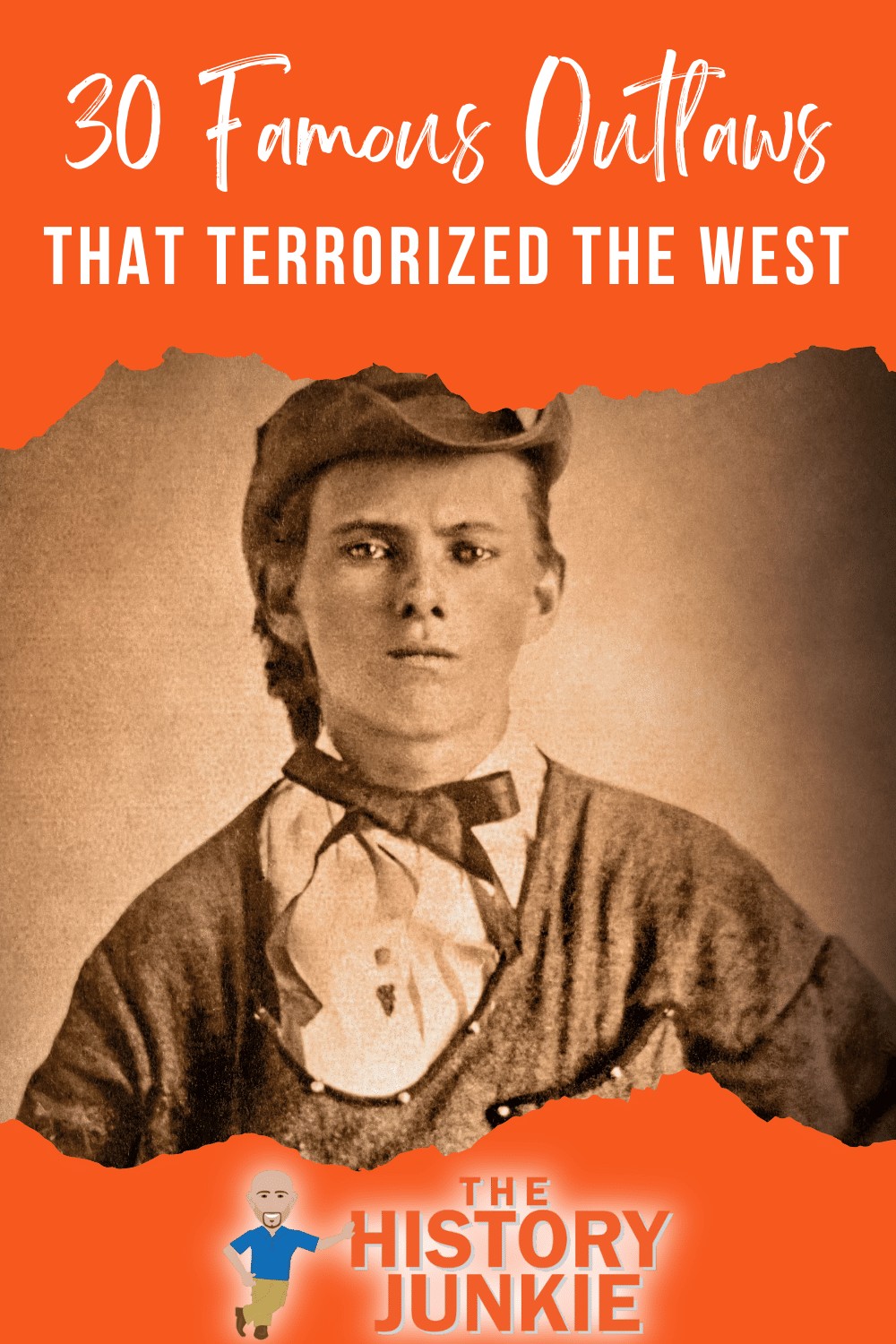
While during the research, it struck me how many of the male outlaws did not have a father. They had either died of disease, war, or an accident when the boy was young.
Of course, this does not apply to each of them. John Wesley Hardin and his brothers had a father who was a Methodist minister, and they were extremely violent.
While these characters are somewhat celebrated, I would like to note that most of these men were extremely violent and killed innocent folks for simply being in the way.
Some of them only killed those who tried to hurt them, but usually, they were trying to hurt the other person by stealing their cattle or some other livelihood.
Most of the men died young, and some of the women listed as well. Only a few turned themselves around and lived a respectful life after their criminal behavior.
Jump to:
- 1. Billy the Kid
- 2. Jesse James
- 3. Butch Cassidy
- 4. Belle Starr
- 5. Sam Bass
- 6. Bill Doolin
- 7. John Wesley Hardin
- 8. The Sundance Kid
- 9. Fred Waite
- 10. Frank James
- 11. Cole Younger
- 12. Curly Bill Brocius
- 13. Ike Clanton
- 14. Black Bart
- 15. Cullen Baker
- 16. Dan Bogan
- 17. Black Jack Ketchum
- 18. Johnny Ringo
- 19. Rufus Buck
- 20. Tom Horn Jr.
- 21. Jim "Killer" Miller
- 22. Charlie Bowdre
- 23. Laura Bullion
- 24. Doc Holliday
- 25. John King Fisher
- 26. Felipe Espinosa
- 27. Bill Longley
- 28. Cherokee Bill
- 29. Pearl Hart
- 30. Apache Kid
1. Billy the Kid
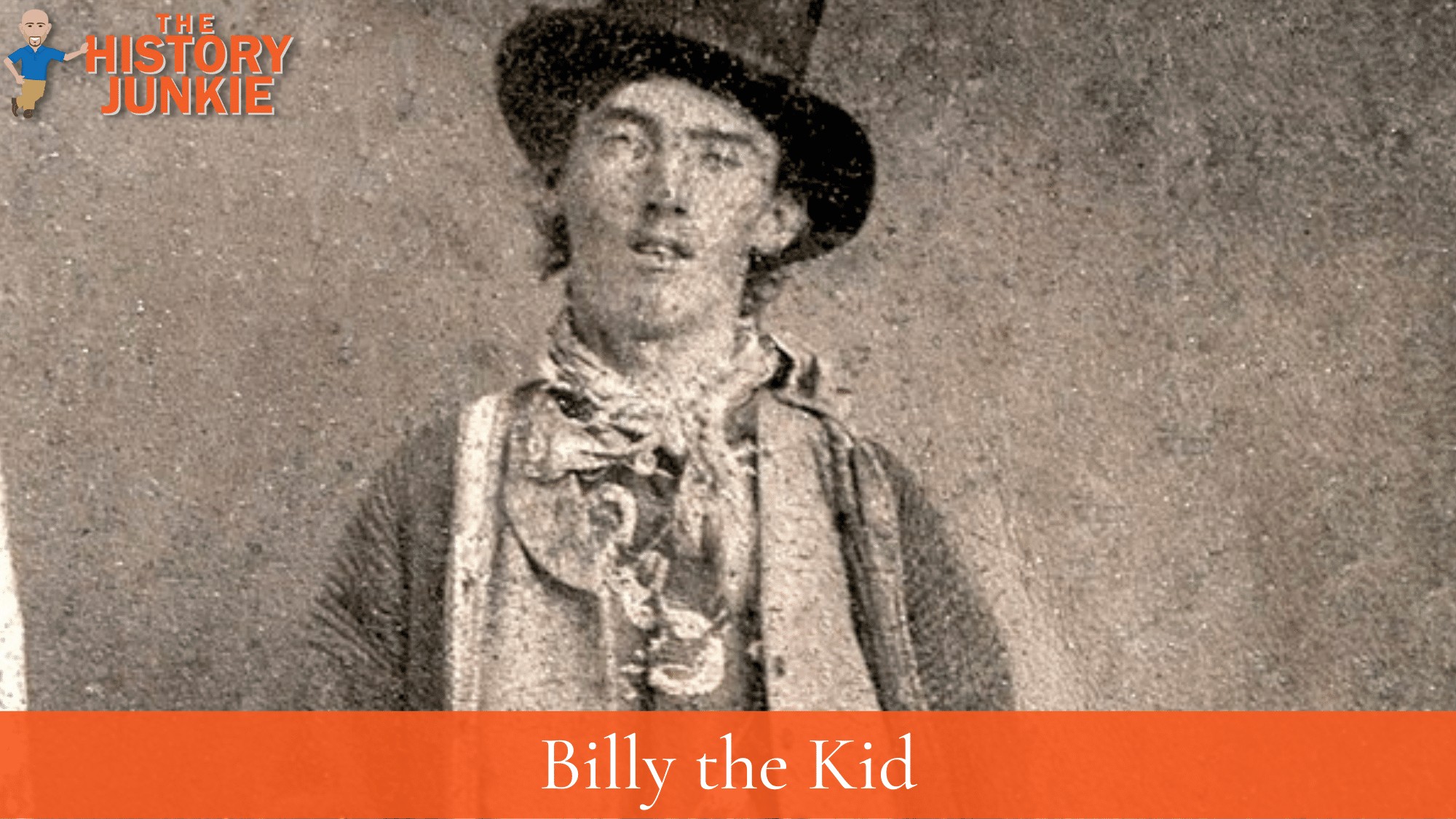
Billy the Kid is probably the most notorious outlaw of the Wild West.
During his early years, he gre
Billy the Kid was a notorious criminal in the Wild West. His story became legendary, but his death created more myths than reality.
Also Read: Billy the Kid Timeline
Born Henry McCarty in 1859, Billy the Kid was orphaned at the age of 15. He was arrested for the first time in 1875 for stealing food and again ten days later for robbing a Chinese laundry. He escaped from custody both times and fled to Arizona Territory.
In 1877, Billy the Kid changed his name to William H. Bonney. He became a wanted man in Arizona after killing a blacksmith in a dispute. He returned to New Mexico, where he joined a group of cattle rustlers.
Billy the Kid gained notoriety during the Lincoln County War of 1878. He was accused of killing three men, including Lincoln County Sheriff William J. Brady. His story was widely reported in newspapers across the country, and he became known as "Billy the Kid."
In December 1880, Sheriff Pat Garrett captured Billy the Kid. He was tried and convicted of Brady's murder and sentenced to hang. However, Billy the Kid escaped from jail on April 28, 1881, killing two sheriff's deputies in the process. He was shot and killed by Garrett two months later.
Also Read: Who Killed Billy The Kid
2. Jesse James
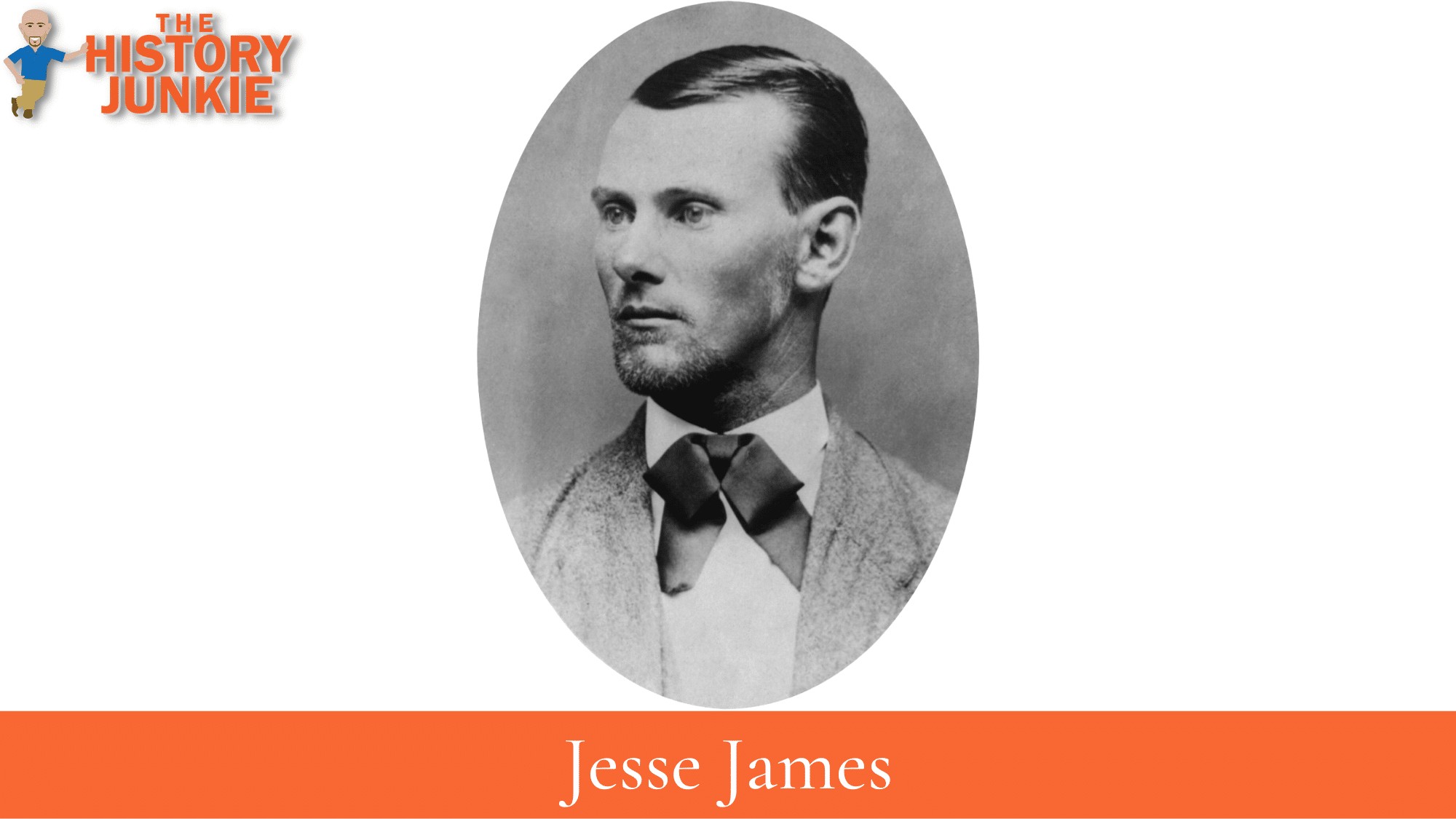
Jesse James was an American outlaw, bank and train robber, guerrilla, and leader of the James–Younger Gang. Raised in Western Missouri, James and his family maintained strong Southern sympathies.
He and his brother Frank James joined pro-Confederate guerrillas known as "bushwhackers" operating in Missouri and Kansas during the Civil War.
Also Read: Jesse James Timeline of Terror
After the war, the James brothers turned to a life of crime. They robbed banks, trains, and stagecoaches throughout the Midwest.
They became folk heroes to many Southerners, who saw them as Robin Hood-like figures who were fighting back against the North. However, they were also feared and hated by many others, who saw them as cold-blooded killers.
On April 3, 1882, Jesse James was shot and killed by Robert Ford, a new recruit to the gang who hoped to collect a reward on James's head and a promised amnesty for his previous crimes.
3. Butch Cassidy
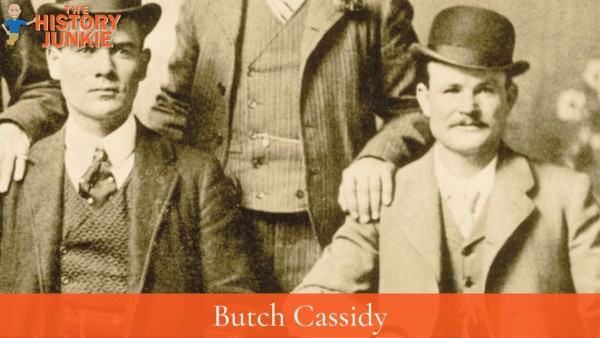
Butch Cassidy, born Robert LeRoy Parker, was an American outlaw and train robber who led the Wild Bunch gang in the late 19th century.
He was born in Beaver, Utah, in 1866 and grew up in a Mormon family. He began his criminal career as a cattle rustler but soon graduated to train robbery.
Cassidy was a charismatic and intelligent leader, and he quickly gained a reputation as one of the most feared outlaws in the West.
He and his gang were responsible for a string of high-profile robberies, including the holdup of the Union Pacific Overland Mail in 1894.
In 1901, Cassidy and the Sundance Kid fled to Bolivia, where they continued their criminal activities. They were eventually killed in a shootout with Bolivian soldiers in 1908.
4. Belle Starr
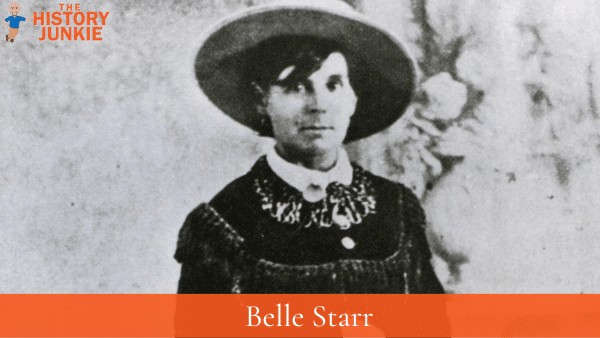
Belle Starr was born Myra Maybelle Shirley. She was an American outlaw who gained national notoriety after her violent death. She associated with the James–Younger Gang and other outlaws.
She was convicted of horse theft in 1883. She was fatally shot in 1889 in a case that is still officially unsolved.
Starr was born in Carthage, Missouri, to a prominent family. Her father was a judge, and her mother was a well-educated woman. Starr was educated at home and in private schools.
She was a skilled horsewoman and marksman, and she was known for her beauty and her fiery personality.
In 1866, Starr married Jim Reed, a Confederate guerrilla fighter. The couple had two children together. Reed was killed in a gunfight in 1874, and Starr was left to raise their children on her own.
After Reed's death, Starr began associating with outlaws. She married Sam Starr, a Cherokee outlaw, in 1880. The couple settled in the Indian Territory, where they became involved in horse theft and other criminal activities.
Starr was arrested several times for her crimes, but she was never convicted. She was eventually killed in a gunfight near Fort Smith, Arkansas, in 1889. Her death was a mystery, and her killer was never identified.
5. Sam Bass
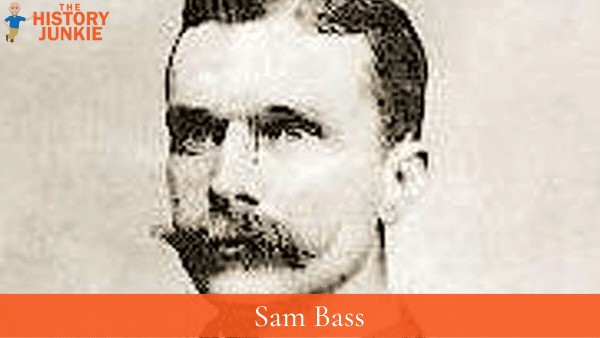
Sam Bass was active in the late 19th century. He was born in Mitchell, Indiana, in 1851. He left home at a young age and drifted west, eventually settling in Texas.
Bass began his criminal career as a cattle rustler. In 1877, he joined a gang of outlaws led by Joel Collins. The gang robbed several stagecoaches and trains in Texas and Nebraska.
In 1878, Bass and the Collins gang robbed a Union Pacific train in Big Springs, Nebraska. They made off with $60,000 in gold, which was the largest train robbery in American history at the time.
The robbery made Bass a national celebrity. He was featured in newspapers and magazines across the country. He was also the subject of a popular folk song, "The Ballad of Sam Bass."
Bass and the Collins gang continued to rob trains and stagecoaches. However, they were eventually caught by the Texas Rangers.
Bass was shot and killed in a gunfight with the Rangers in Round Rock, Texas, on July 21, 1878.
6. Bill Doolin

Bill Doolin was the founder of the Wild Bunch (Butch Cassidy would take his name later), sometimes known as the Doolin-Dalton Gang.
Like the earlier Dalton Gang alone, it specialized in robbing banks, trains, and stagecoaches in Arkansas, Kansas, Indiana, and Oklahoma during the 1890s.
Doolin was born in Johnson County, Arkansas, in 1858. He worked as a cowboy and a farmer before turning to a life of crime.
In 1891, he joined the Dalton Gang, and he was involved in the gang's infamous Coffeyville, Kansas, bank robbery in 1892.
After the Coffeyville robbery, Doolin formed his own gang, the Wild Bunch. The gang robbed banks, trains, and stagecoaches throughout the Midwest.
They were eventually tracked down by lawmen and killed in a shootout in Lawson, Oklahoma, in 1896.
Doolin had a son who would take his stepdad's name and live a clean life. He seemed to want to distance himself from his biological father's reputation.
7. John Wesley Hardin
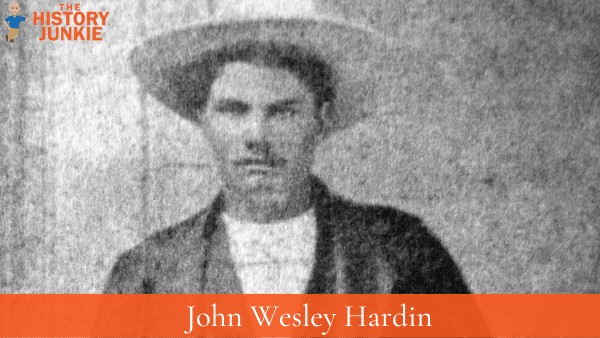
John Wesley Hardin was born to a Methodist preacher who named his son after the famous Methodist founder, John Wesley.
He was born in Bonham, Texas, in 1853, and he began his life of crime at a young age.
He killed his first man at the age of 15, and he was eventually sentenced to 24 years in prison for murder.
While in prison, Hardin studied law and wrote an autobiography. He was well known for exaggerating or fabricating stories about his life, and he claimed credit for many killings that cannot be corroborated.
Hardin was released from prison in 1894, and he was killed by John Selman in an El Paso saloon just one year later.
He was sadistic and led a life of violence and led his brothers into violence as well.
8. The Sundance Kid
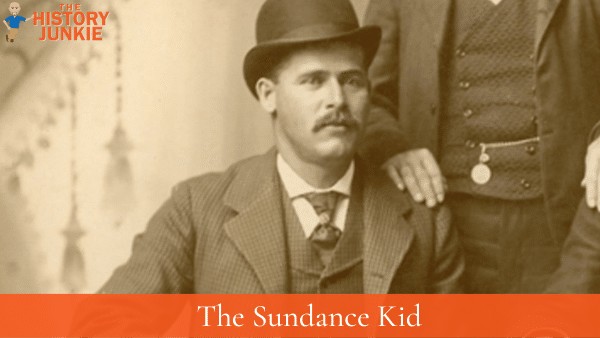
Harry Longabaugh began his criminal career as a cattle rustler. In 1887, he was arrested for stealing a horse and sentenced to 18 months in jail. He adopted the nickname "Sundance Kid" during this time in jail.
After his release, Longabaugh became involved in train and bank robbery. He met Butch Cassidy in 1889, and the two men became partners in crime.
They joined the Wild Bunch, a gang of outlaws that specialized in robbing banks and trains in the Rocky Mountains and the Great Plains.
The Wild Bunch was one of the most successful outlaw gangs in the history of the American West. They robbed over 20 banks and trains, and they were never caught by the law.
In 1901, the Wild Bunch fled to South America to escape the law. They settled in Bolivia, where they continued their criminal activities. However, they were eventually killed in a shootout with Bolivian soldiers in 1908.
The Sundance Kid's death is still a mystery. Some people believe that he was killed in the shootout, while others believe that he escaped and lived a quiet life under an assumed name.
9. Fred Waite
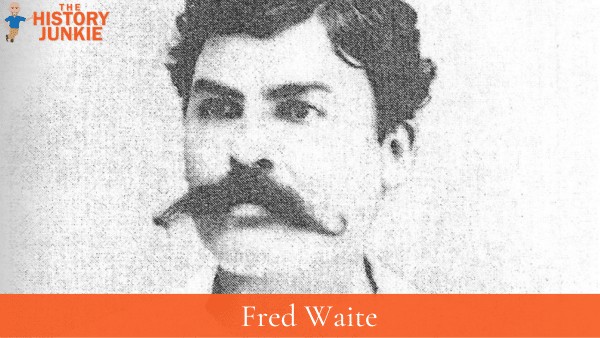
Fred Waite was a Chickasaw Indian who was noted for a period when he was a cowboy in New Mexico and a member of Billy the Kid's gang.
He was also known for later serving as a legislator in the Chickasaw Nation government and as its Attorney General.
Waite was born in the Chickasaw Nation in Indian Territory (now Oklahoma). He left Indian Territory to work as a cowboy in the New Mexico Territory.
While working for John Tunstall as a ranch hand, he met Bill Bonney and several other men.
In 1878, Waite was involved in the Lincoln County War. He was present at the assassination of Sheriff William J. Brady and one of his deputies. He was also present at the gunfight at the McSween house, where several people were killed.
After the Lincoln County War, Waite left Billy the Kid's gang and returned to the Chickasaw Nation.
He was elected to the Chickasaw Nation legislature in 1880, and he served as Attorney General of the Chickasaw Nation from 1887 to 1891.
Waite died of rheumatism in 1895. He was 42 years old.
10. Frank James
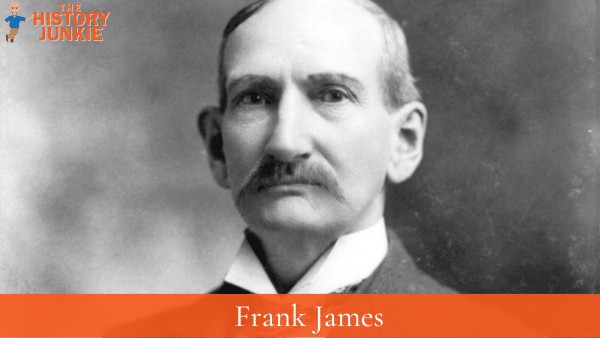
Frank James was a guerrilla fighter and a leader of the James–Younger Gang. He was the older brother of Jesse James.
James was born in Clay County, Missouri, to Robert and Zerelda James. He joined the Confederate army during the Civil War and fought as a bushwhacker.
After the war, the James brothers turned to a life of crime. They robbed banks, trains, and stagecoaches throughout the Midwest.
The James–Younger Gang was one of the most notorious outlaw gangs in the history of the Wild West. They were responsible for a string of high-profile robberies, including the Northfield, Minnesota, raid in 1876.
In 1882, Jesse James was shot and killed by Robert Ford, a new recruit to the gang. Frank James was not present at the time of Jesse's death, and he was never charged with any crimes.
After Jesse's death, Frank turned himself in and did his time. When he got out, he lived a quiet life in Missouri.
He worked as a farmer and a businessman (He traveled in Buffalo Bill's Wild West Show), and he became a respected member of the community. He died in 1915 at the age of 72.
11. Cole Younger
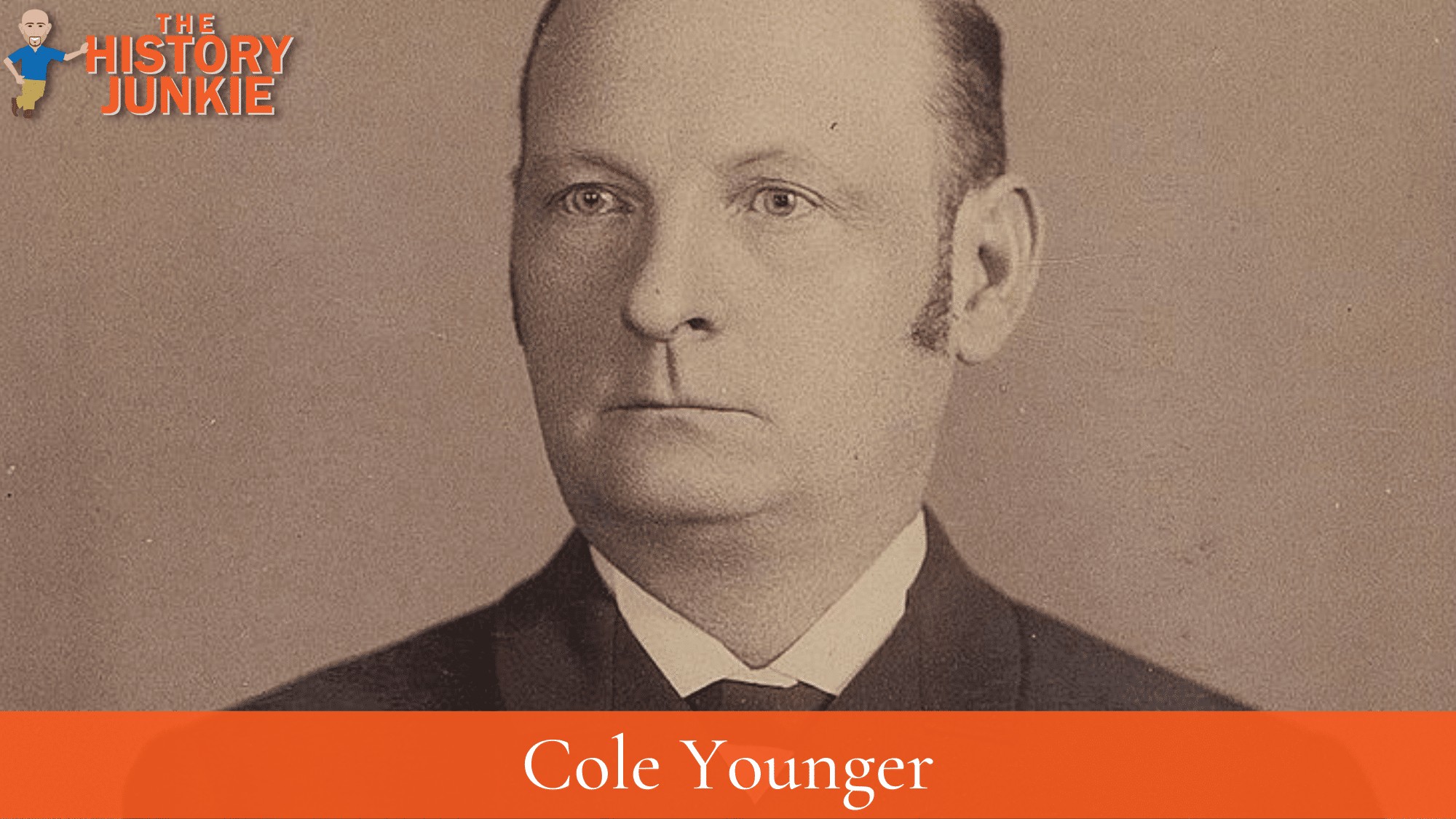
Cole Younger was a member of the James–Younger Gang. He was the younger brother of Frank James.
Younger was born in Clay County, Missouri, to Robert and Zerelda James. He joined the Confederate army during the Civil War and fought as a bushwhacker.
After the war, the James brothers turned to a life of crime. They robbed banks, trains, and stagecoaches throughout the Midwest.
The James–Younger Gang was one of the most notorious outlaw gangs in the history of the Wild West. They were responsible for a string of high-profile robberies, including the Northfield, Minnesota, raid in 1876.
In 1876, Younger was captured after the Northfield raid and sentenced to 25 years in prison. He served 12 years in prison before being paroled in 1888.
After his release from prison, Younger became a farmer and a businessman. He also toured with a Wild West show.
On August 21, 1912, Cole declared that he had become a Christian and repented of his criminal past. He was baptized at Lee’s Summit Christian Church on 16 August 1913.
12. Curly Bill Brocius
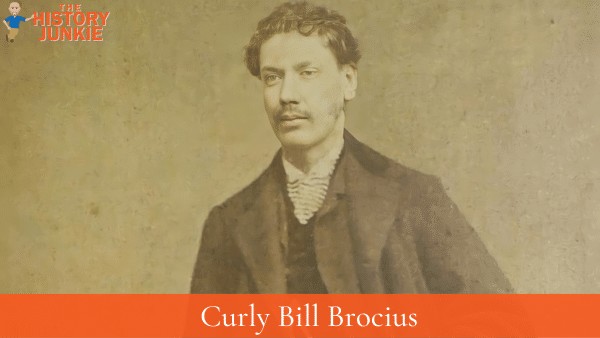
Curly Bill Brocius was a leader of the Cochise County Cowboys, a group of rustlers and bandits active in the Arizona Territory during the late 1870s and early 1880s.
Brocius was born in Crawfordsville, Indiana, around 1845. He moved to Arizona Territory in the late 1870s, and he quickly became involved in the outlaw life.
He was known for his violent temper and his quick draw, and he was a frequent target of lawmen.
Brocius was involved in a number of high-profile shootouts, including the Battle of Skeleton Canyon in 1881.
He was also accused of the murder of several people, including Sheriff Fred White, in Tombstone, Arizona.
In 1882, Brocius was shot and killed by Wyatt Earp in a gunfight near Mescal Spring, Arizona.
His death marked the end of the Cochise County Cowboys, and it brought an end to an era of lawlessness in the Arizona Territory.
13. Ike Clanton

Ike Clanton was a member of the Clanton family, who clashed with lawmen Wyatt, Virgil, and Morgan Earp, as well as Doc Holliday. On October 26, 1881, Clanton was present at the Gunfight at the O.K. Corral in the boomtown of Tombstone, Arizona Territory, but was unarmed and ran from the gunfight, in which his younger brother Billy was killed.
Clanton was born in Callaway County, Missouri, to Newman Haynes Clanton, a successful cattle rancher, and trader. He was the eldest of nine children.
Ike was a tall, lanky man with a slender frame and a wild demeanor. He was known for his quick temper and his quick draw, and he was a frequent target of lawmen.
In 1877, Clanton moved to Tombstone, Arizona Territory, where he became involved in the cattle business. He also became involved in the outlaw life, and he was a member of the Cowboys, a group of rustlers and bandits who were active in the area.
In 1881, Clanton was involved in the Gunfight at the O.K. Corral, a shootout between the Cowboys and the Earp brothers and Doc Holliday.
Clanton was unarmed and ran from the gunfight, in which his younger brother Billy was killed.
After the gunfight, Clanton was arrested for murder, but he was acquitted. He continued to be involved in the outlaw life, and he was eventually killed in a gunfight in 1887.
14. Black Bart
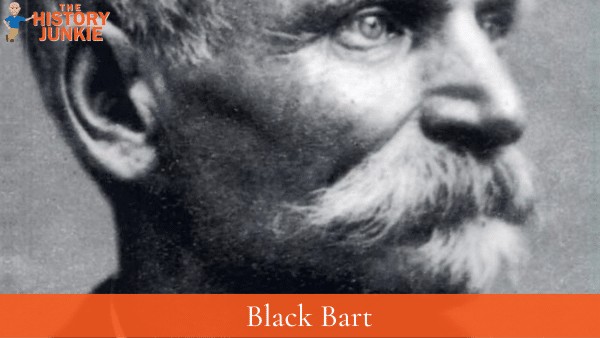
Black Bart, also known as Charles E. Boles, was a notorious stagecoach robber who operated in California and Oregon during the 1870s and 1880s.
He was known for his gentlemanly demeanor, his polite interactions with his victims, and his habit of leaving behind poems at the scene of his robberies.
Boles was born in Norfolk, England, in 1829. He immigrated to the United States with his family in 1849 during the Gold Rush. He settled in California, where he worked as a miner, a farmer, and a teacher. In 1854, he married Mary Elizabeth Johnson. The couple had four children together.
Boles began robbing stagecoaches in 1875. He would typically target Wells Fargo stagecoaches, and he would always wear a black suit and a black hat, which earned him the nickname "Black Bart." He was also known for his politeness and his habit of tipping his hat to his victims.
Boles robbed 28 stagecoaches in total, and he always left behind a poem at the scene of the crime. These poems were often humorous and self-deprecating, and they helped to solidify his reputation as a gentleman bandit.
In 1883, Boles was finally caught after he was shot and forced to flee the scene of his last robbery. He was identified by the laundry mark on a handkerchief that he had dropped, and he was sentenced to six years in prison.
Boles was released from prison in 1888, and he disappeared from public view. His ultimate fate is unknown, but there are many theories about what happened to him. Some believe that he died in New York, while others believe that he went to Mexico or Canada.
15. Cullen Baker

Cullen Montgomery Baker was a Tennessee-born desperado whose gang terrorized Union soldiers and civilians in Northeast Texas, Southwest Arkansas, and Northwest Louisiana during the early days of the American Old West.
His gang is alleged to have killed hundreds of people in the years following the Civil War, though these numbers are probably inaccurate, and the actual number is between fifty and sixty.
Baker was notorious for his fiery temper and for fighting in saloon brawls. During one fight, he was knocked unconscious by a man named Morgan Culp, who hit him in the head with a tomahawk.
Baker was born in Weakley County, Tennessee, on June 23, 1835, to John Baker and his wife. Soon afterward, his family moved to Clarksville, Arkansas, and as Cullen matured, he spent much of his time in the saloons and bars of what are now Lafayette and Miller Counties.
His father was an honest farmer and owned cattle as well as working in the fields.
Baker joined the Confederate Army in 1861 and served in the Trans-Mississippi Department. He was discharged in 1865 after the war ended.
After the war, Baker returned to Arkansas and began terrorizing the countryside. He and his gang robbed stagecoaches, banks, and stores, and they also killed many people.
Baker was eventually tracked down and killed by a posse of lawmen in January 1869. He was shot and killed in a gunfight near the town of Washington, Arkansas.
16. Dan Bogan
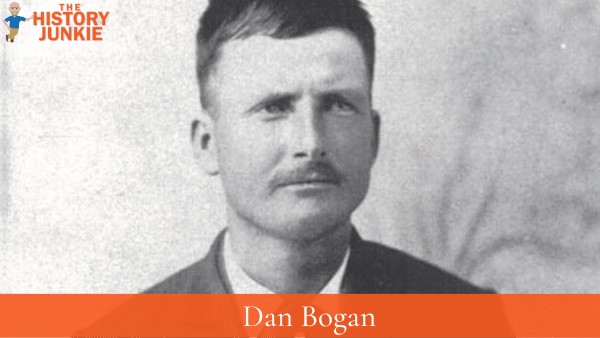
Dan Bogan is considered to have been one of the most underrated gunmen of the Wild West. He had a fierce, violent streak due to his personality.
He is included as one of twelve described in such a way in the book "Deadly Dozen" by author Robert K. DeArment.
Bogan was born in Alabama in 1860. He moved to Texas in the early 1880s, where he worked as a cowboy and a gambler. He was known for his quick temper and his skill with a gun.
In 1884, Bogan was involved in a cowboy's strike for better wages. He was blacklisted after the strike, and he was forced to leave Texas.
He went to Wyoming, where he became involved in a feud with a cattleman named Charles Gunn.
In 1887, Bogan was convicted of the murder of Gunn and sentenced to death. However, he escaped from prison and fled to Mexico.
He was killed in a shootout in Mexico in 1889.
17. Black Jack Ketchum
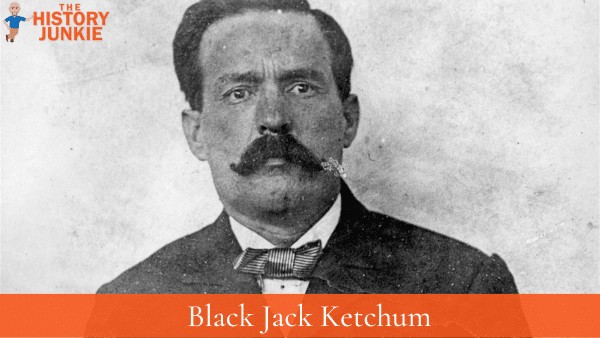
Thomas Edward Ketchum, better known as Black Jack, was active in the late 19th century.
He was born in San Saba County, Texas, in 1863. He left home at a young age and drifted west, eventually settling in New Mexico.
Ketchum began his criminal career as a cattle rustler. In 1892, he joined the Hole in the Wall Gang, a group of outlaws led by Butch Cassidy that specialized in robbing banks and trains in the Rocky Mountains and the Great Plains.
The Hole in the Wall Gang was one of the most successful outlaw gangs in the history of the Wild West. They robbed over 20 banks and trains, and they were never caught by the law.
In 1896, the Hole in the Wall Gang was broken up by lawmen.
Ketchum was captured and sentenced to death for the murder of a railroad worker.
Ketchum was executed by hanging in Clayton. Nobody in Clayton had any experience in conducting hangings; the rope was too long, and since Ketchum had gained a significant amount of weight during his time in jail, he was decapitated when he dropped through the trap door.
18. Johnny Ringo
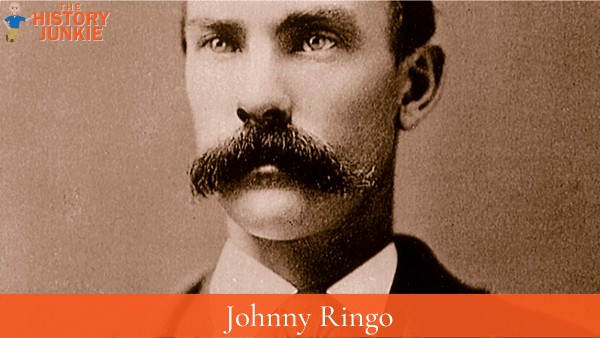
Johnny Ringo was loosely associated with the Cochise County Cowboys in frontier boomtown Tombstone, Arizona Territory.
He took part in the Mason County War in Texas, during which he committed his first murder. He was arrested and charged with murder. He was affiliated with Cochise County Sheriff Johnny Behan, Ike Clanton, and Frank Stilwell from 1881–1882.
He got into a confrontation in Tombstone with Doc Holliday and was suspected by Wyatt Earp of having taken part in the attempted murder of Virgil Earp and the ambush and death of Morgan Earp.
Ringo was born in Greens Fork, Indiana, on May 3, 1850. His family moved to Missouri and then to Gallatin, Tennessee, where he grew up.
He was a quiet and withdrawn child, and he was often bullied by other boys. In 1869, he moved to Mason County, Texas, where he became involved in the Mason County War.
He was arrested and charged with murder, but he was acquitted.
In 1879, Ringo moved to Arizona Territory. He became involved with the Cochise County Cowboys, a group of outlaws who were often at odds with the Earp family.
In 1881, Ringo was suspected of being involved in the Gunfight at the O.K. Corral. He was never charged with any crime, but he was seen as a dangerous man.
On July 13, 1882, Ringo was found dead in Turkey Creek Canyon, Arizona. He passed away suddenly, and Ringo was buried in Dragoon, Arizona.
19. Rufus Buck
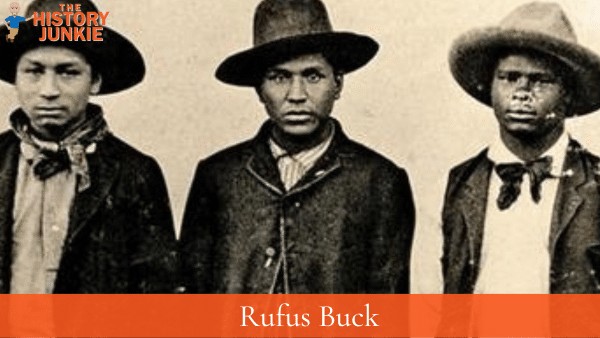
Rufus Buck led a gang of four other young men on a two-week crime spree in the Indian Territory (now Oklahoma) in 1895. The gang committed murder, rape, robbery, and assault, and they were eventually captured and executed.
Buck was born in 1874 to a black mother and a Creek father. He grew up in the Creek Nation, and he attended Wealaka Mission, a boarding school for Creek children. However, he was expelled from the school for unruly behavior.
In 1895, Buck formed a gang with four other young men: Lewis Davis, Sam Sampson, Maoma July, and Lucky Davis. The gang began building up a small stockpile of weapons while staying in Okmulgee, Oklahoma.
After killing U.S. Deputy Marshal John Garrett on July 30, 1895, the gang began holding up various stores and ranches in the Fort Smith area during the next two weeks.
In one incident, a salesman named Callahan – after being robbed – was offered a chance to escape if he could outrun the gang. When the elderly Callahan successfully escaped, the gang killed his assistant in frustration.
The gang's crime spree came to an end on August 4, 1895, when they were captured by U.S. marshals. They were tried and convicted of murder, rape, and robbery, and they were sentenced to death. The verdict was appealed, but the appeal was denied.
On July 1, 1896, Buck and the other members of the gang were hanged in Fort Smith, Arkansas. They were the only people ever executed for rape in the Indian Territory.
20. Tom Horn Jr.
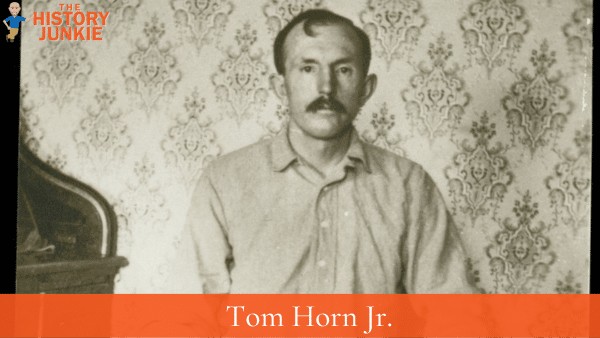
Thomas Horn Jr. was an American scout, cowboy, soldier, range detective, and Pinkerton agent in the 19th-century and early 20th-century Wild West.
Believed to have committed 17 killings as a hired gunman throughout the West, Horn was convicted in 1902 of the murder of 14-year-old Willie Nickell near Iron Mountain, Wyoming.
Willie was the son of sheep rancher Kels Nickell, who had been involved in a range feud with neighbor and cattle rancher Jim Miller.
On the day before his 43rd birthday, Horn was executed by hanging in Cheyenne, Wyoming.
Horn's guilt or innocence in the Nickell murder is still debated today. Some people believe that he was framed by the cattlemen, while others believe that he was guilty.
21. Jim "Killer" Miller
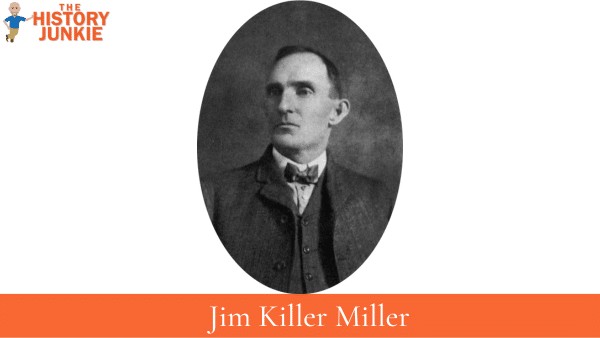
James Brown Miller (October 25, 1861 – April 19, 1909), also known as "Killin' Jim," "Killer Miller," and "Deacon Jim," was a title-holder gunfighter of the Wild West, said to have killed 12 people during gunfights.
Miller was referred to by some by the alias "Deacon Jim" because he regularly attended the Methodist Church and did not smoke or drink.
In the late 1880s, Miller began working as a hired gunman for cattlemen and businessmen.
He was involved in a number of high-profile assassinations, including the murder of former deputy U.S. Marshal Bud Ledbetter in 1909.
He was lynched in Ada, Oklahoma, in 1909 along with three other men, by a mob of residents angry that he had assassinated a former deputy U.S. marshal.
22. Charlie Bowdre
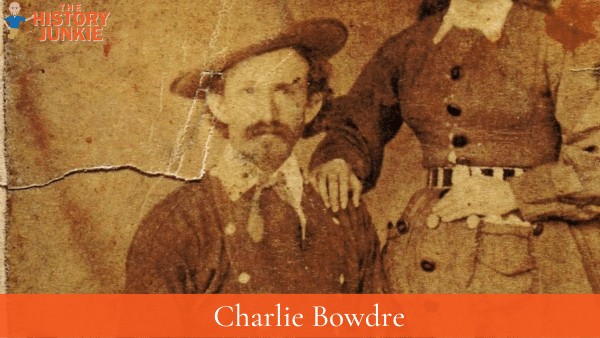
Charlie Bowdre was an associate of Billy the Kid and a member of his gang.
Bowdre was born in Wilkes County, Georgia. When he was three years old, he and his parents moved to Mississippi. By 1854, young Charlie started working on his father's farm, and as he grew up became an adept farmer.
In 1874, Bowdre moved to Lincoln County, New Mexico. He became friends with Doc Scurlock and opened a cheese factory on the Gila River. During this time, he also joined Doc on several posses and pursued cattle thieves and rustlers and even took part in the lynchings of some of those he captured.
In 1878, Bowdre became involved in the Lincoln County War. He fought on the side of the Tunstall-McSween faction, and he was present at the Battle of Blazer's Mills, where he was shot and wounded.
In 1880, Bowdre was traveling with Billy the Kid and a few other men when they were ambushed by Pat Garrett and his posse. Bowdre was shot and killed, and his body was taken to Fort Sumner, where it was buried.
Bowdre was a loyal friend to Billy the Kid, and he was killed in the same ambush that killed the Kid. He is remembered as one of the most trusted members of Billy's gang.
23. Laura Bullion
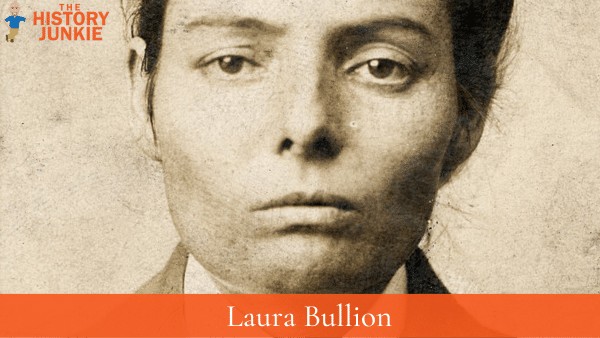
Laura Bullion was an outlaw of the Wild West. She was born in Knickerbocker, near Mertzon, in Irion County, Texas, in 1876.
She was known as "Della Rose" or "Rose of the Wild Bunch" by the gang and soon became an official member. She would sell stolen goods, forge signatures, and gather supplies.
In 1901, Bullion was arrested in St. Louis, Missouri, for her role in the Great Northern train robbery. She was convicted of robbery and sentenced to five years in prison.
She served three and a half years of her sentence and was released in 1905.
After her release, Bullion moved to Memphis, Tennessee, where she lived the remainder of her life working as a householder and seamstress and later as a drapery maker, dressmaker, and interior designer.
She died of heart disease on December 2, 1961, and is buried in Memphis under a tombstone that reads, “Freda Bullion Lincoln—Laura Bullion—The Thorny Rose.”
Bullion was a complex and controversial figure. She was a skilled gunman, but she was also a troubled woman.
She was often drunk and depressed, and she may have suffered from mental illness.
24. Doc Holliday
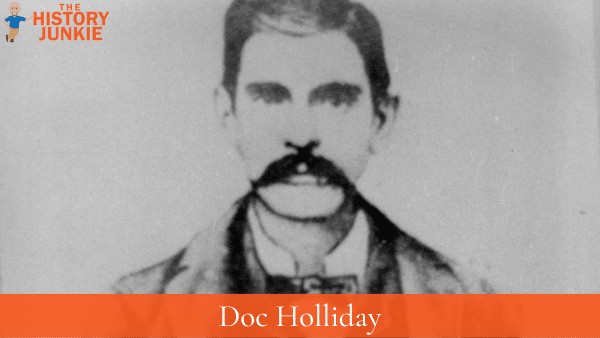
Doc Holliday was an American gambler, gunfighter, and dentist. A close friend and associate of lawman Wyatt Earp, Holliday is best known for his role in the events leading up to and following the Gunfight at the O.K. Corral in Tombstone, Arizona.
He was educated in Valdosta, Georgia, and attended the Pennsylvania College of Dental Surgery in Philadelphia. He graduated from dental school in 1872, but he never practiced dentistry full-time.
In 1873, Holliday was diagnosed with tuberculosis. He moved west in search of a drier climate, and he eventually settled in Dodge City, Kansas. He became a gambler and a gunfighter, and he quickly gained a reputation as a dangerous man.
In 1881, Holliday moved to Tombstone, Arizona, where he joined forces with Wyatt Earp and his brothers. The Earps were involved in a feud with the Clanton gang, and Holliday fought alongside them in the Gunfight at the O.K. Corral.
After the gunfight, Holliday and the Earps left Tombstone. Holliday traveled to Colorado, where he died of tuberculosis on November 8, 1887.
He is a unique outlaw in that it is assumed he committed many crimes, but his relationship with Wyatt Earp and his brothers often depicts him as a wild gambler and not a cold-blooded murderer or bank robber, many others on the list.
25. John King Fisher
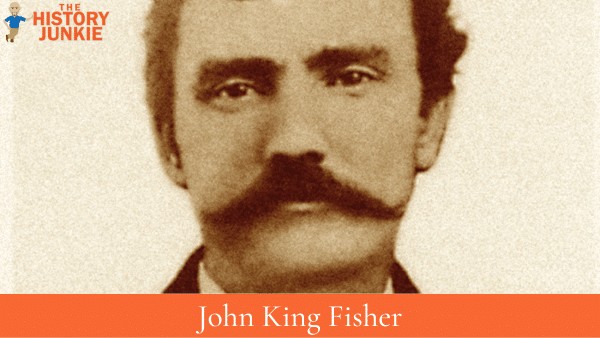
John King Fisher was a Texas rancher, lawman, gunfighter, and outlaw. He was born in Collin County, north of Dallas, Texas, in October 1853.
Fisher began his career as a cowboy, and he soon became involved in cattle rustling. He was arrested several times, but he was never convicted.
In 1874, he was appointed deputy sheriff of Uvalde County. He served in this position for several years, and he was known for his efficiency and his ability to bring in outlaws.
In 1881, Fisher was involved in a shootout with a group of outlaws in San Antonio. He was wounded in the shootout, but he survived.
After this incident, Fisher became a full-time lawman. He served as sheriff of Uvalde County from 1882 to 1883, and he was known for his tough stance on crime.
In 1884, Fisher was killed in a shootout in San Antonio. He was shot and killed by a man named Ben Thompson, who was also a gunfighter and a lawman.
Fisher's death was a major loss to the law enforcement community in Texas.
He began his career as an outlaw and probably should have been put behind bars, but the lawlessness of the 19th century made it hard to prosecute him. Unlike most on this list, he changed his ways and became a respected man in his community.
26. Felipe Espinosa
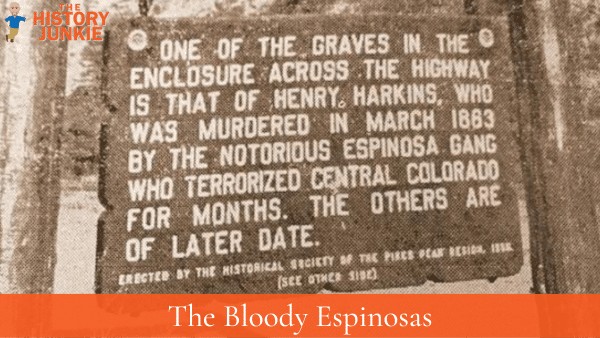
Felipe Nerio Espinosa was a notorious Mexican-American murderer who killed an estimated thirty-two people in the Colorado Territory throughout the spring and fall of 1863.
He was known as the "Axeman of Colorado" because he often mutilated his victims with an axe.
Espinosa was born in Rio Arriba County, New Mexico, around 1827. He was a skilled gunman and horseman, and he was known for his violent temper. In 1863, he and his brother, José Vivian Espinosa, along with several cousins, began a murder spree in the Colorado Territory.
The Espinosas' first victim was found in May 1863, his corpse mutilated, and the heart hacked out of his chest.
During that summer, twenty-five more people were attacked and killed in a similar fashion. Espinosa sent a letter to Territorial Governor John Evans stating his intention to murder 600 "gringos," if he and the other members of his gang were not granted pardons, some 5,000 acres in Conejos County, and appointments in the 1st Colorado Volunteer Infantry Unit.
The Espinosas were eventually tracked down and killed by a posse of U.S. soldiers and Colorado militiamen.
Felipe Espinosa's head was cut off and displayed in Fort Garland as a warning to other outlaws.
27. Bill Longley
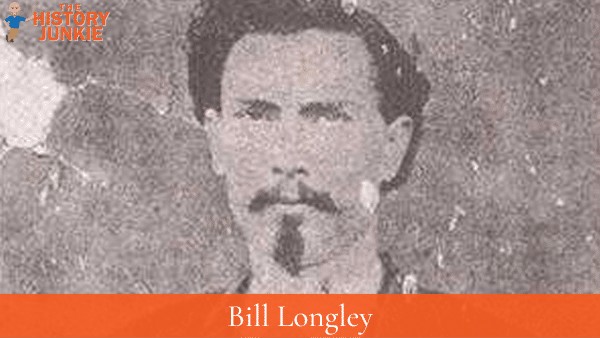
William Preston Longley, also known as Wild Bill Longley, was noted for his ruthless nature, speed with a gun, quick temper, and unpredictable demeanor.
He is considered to have been one of the deadliest gunfighters in the Old West.
Longley was born in Evergreen, Texas, and grew up in a family of farmers. He was a skilled gunman and horseman from a young age, and he was known for his quick temper and his willingness to use violence.
In 1870, Longley was involved in a gunfight with a man named Wilson Anderson, in which Anderson was killed. Longley was arrested and charged with murder, but he was acquitted.
In the years that followed, Longley became involved in a number of other gunfights, and he is said to have killed at least 32 people. He was also known for his robberies and his cattle rustling.
In 1877, Longley was arrested for the murder of a man named George Thomas. He was tried and convicted, and he was sentenced to hang.
Longley was hanged in Giddings, Texas, on October 11, 1878. He was 27 years old.
28. Cherokee Bill
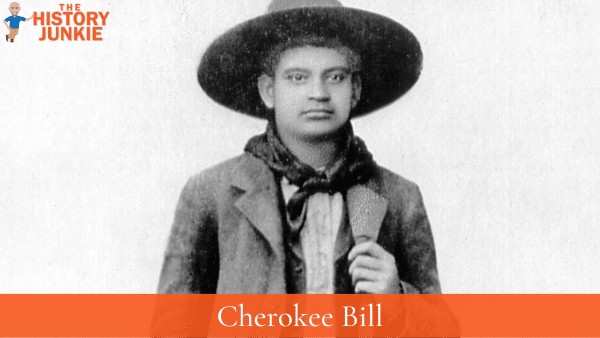
Cherokee Bill terrorized the Indian Territory (now Oklahoma) in the late 1800s. He was known for his skill with a gun, his ruthlessness, and his flamboyant dress.
Cherokee Bill was born in Fort Concho, Texas, on February 8, 1876. His father was a mulatto from Alabama, and his mother was a Cherokee Freedman with African, Indian, and white ancestry.
Goldsby's parents separated when he was young, and he was raised by his mother in Fort Gibson, Indian Territory. He attended a school for Indians in Cherokee, Kansas, for three years.
In 1889, Goldsby became involved with a group of outlaws known as the Cook Gang. The gang was responsible for a number of robberies and murders, and Goldsby quickly gained a reputation as a dangerous man.
In 1893, Goldsby was arrested for the murder of a man named William Murphy. He was tried and convicted, and he was sentenced to hang.
Goldsby was hanged in Fort Smith, Arkansas, on March 17, 1896. He was 19 years old.
29. Pearl Hart
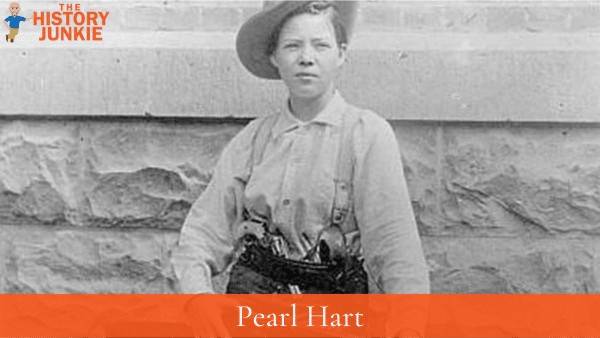
Pearl Hart was a Canadian-born outlaw of the Wild West. She committed one of the last recorded stagecoach robberies in the United States, and her crime gained notoriety primarily because of her gender.
Hart was born Pearl Taylor in the Canadian village of Lindsay, Ontario. Her parents were both religious and affluent, and they provided their daughter with the best available education.
At the age of 16, she was enrolled in a boarding school where she became enamored with a young man named Hart, who has been variously described as a rake, drunkard, and/or gambler.
After eloping with Hart, the couple moved to the American West, where they lived a life of crime. In 1899, they robbed a stagecoach in Globe, Arizona, and made off with $400. The robbery was a success, and Hart became a celebrity.
However, the couple's luck soon ran out. They were arrested in 1900, and Hart was sentenced to five years in prison. She served three years of her sentence and was released in 1903.
After her release, Hart returned to Canada, where she lived a quiet life. She died in 1955 at the age of 84.
30. Apache Kid
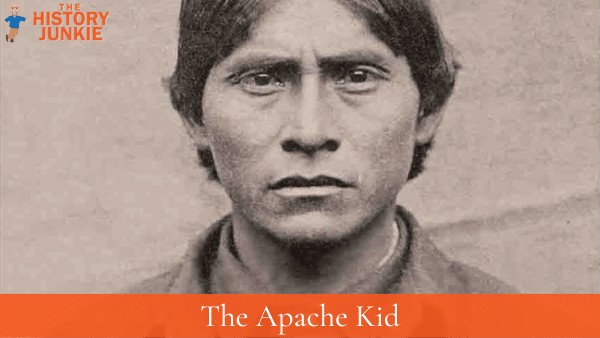
Haskay-bay-nay-ntayl, better known as the Apache Kid, was a White Mountain Apache scout, and later a renegade, active in the borderlands of the U.S. states of Arizona and New Mexico in the late 19th and possibly the early 20th centuries.
He was known for his skill as a scout and his ability to survive in the harsh desert environment.
The Apache Kid was born in Aravaipa Canyon (25 miles south of San Carlos Agency) into one of the three local groups of the Aravaipa/Arivaipa Apache Band of San Carlos Apache, one subgroup of the Western Apache people.
As a member of what the U.S. government called the "SI band," Kid developed important skills and became a famous and respected scout.
In 1881, the Apache Kid was involved in the Camp Grant Massacre, in which a group of U.S. soldiers and civilians attacked an Apache village, killing over 100 men, women, and children.
The massacre outraged the Apache people, and the Kid became a renegade.
Over the next several years, the Apache Kid was accused of various crimes, including murder, rape, and robbery. He was also said to have led a small band of renegade Apaches who raided ranches and freight lines throughout New Mexico, Arizona, and Sonora.
The Apache Kid was never captured, and his ultimate fate is unknown. Some believe that he died in Mexico in the early 1900s, while others believe that he lived his life in the United States.
